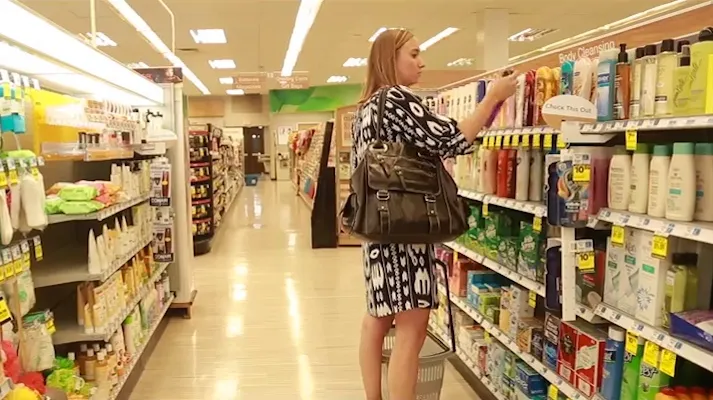There is an age-old adage that suggests that “he who hesitates is lost.” For as long as I can remember, this simply did not seem applicable to the retail industry. Sure, there were always a few who stuck their necks out with visions of grandeur and a goal of forging ahead of the competition; however, for the vast majority, a much more calculated approach to innovation was taken with a goal of risk avoidance and a slow-paced test-and-learn mentality.

Dave Wendland
Whether a direct result of the pandemic or the imminent threat of e-commerce retailers or the fact that many of our country’s largest retailers have acquired talent outside of their traditional industries, the tides have turned. In fact, during a recent event attended by some of the nation’s largest brick-and-mortar retailers representing food, drug, mass and leaders from the value channel, I overheard several declare that they had no fear of innovation, and they were enthusiastically embracing a test-and-fail mindset.
Before I share a few of the bravest retail tests currently under way, allow me to describe the difference between iterative and breakthrough innovation. As the word suggests, small tweaks or modifications to an existing operation can be viewed as iterations. This type of innovation is often done within a small number of stores with a slow and laborious build shaped by countless measurements, analysis and experimentative adjustments. Although I’m not suggesting that iterative changes are not worthwhile, I would only say that if a retailer is expecting substantial and impactful results, they will likely fall short with such an approach to innovation.
Conversely, true innovative breakthroughs are, by their very nature, more far-reaching and often implemented more quickly. Addressing speed of implementation, breakthrough innovation often does not have all the details entirely in place or contingencies defined. And because such innovative measures are often intended to be first to market or to make a large splash, they are typically deployed more broadly. When such approaches prove successful, the results are amazing. However, they require on-the-fly adjustments, tweaking and a large dose of courage.
The following are fearless paths currently being pursued by retailers of various sizes — and there are many more under way:
- Within the grocery segment, Hy-Vee’s recent introduction of its Healthy You health and wellness subscription program offers access to personalized nutrition counseling, preventative health screenings, fitness videos, virtual classes about preparing freezer meals, and more. This approach resembles elements of programs, such as Walmart + and Amazon Prime, that have proven effective for other retail formats. Time will tell if shoppers have the appetite to pay annual fees for exclusive member benefits in the grocery channel that extend beyond traditional shopper loyalty programs.
- Given the explosive growth of the pet category — largely accelerated as a result of the pandemic — several unlikely participants have jumped in with both feet (dare I say, unleashed?). Space has been dedicated within improbable retail settings (e.g., Lowe’s, Canadian Tire), and some manufacturers of traditional consumer health brands have identified unmet needs in caring for pets (e.g., Bausch+Lomb’s Project Watson launch).
- Another prime example that has seen ever-increasing attention and innovation encompasses an expanding emphasis on store brand. Not only have retailers upped their games, at HRG, our team of analysts and business development consultants continue to witness not only a focus on speed-to-market efforts to expand existing portfolios, but also willingness to launch private brands that are stand alone and not alternatives to national brand equivalents. As an example, Target announced it would be stocking its shelves with more products priced under $10 as it tries to appeal to more cost-conscious consumers dealing with once-in-a-generation inflation. Target has plans to launch or expand more than 10 owned brands, adding thousands of new products.
- Best Buy is leaning into out-of-the-box thinking with its recent introduction of its new mail-in service that makes electronic recycling easy and convenient for customers. Supporting the company’s commitment to recycling and catering to the growing interest among consumers to live more sustainably, this service opens new opportunities and extends its free in-store recycling program, launched in 2009, beyond its physical locations.
- Innovation through revitalized storefronts is also an approach to generating more return from a retailer’s existing assets. Walmart spent $3.3 billion on store remodels in 2021, which represents 52% more than it spent in 2018. Target plans to remodel another 200 stores in 2023. Other retailers have reimagined their shopping space to create an environment that emphasizes social interaction and a friendly meet-up setting, while still others have transformed their “phygital” space to meet the anytime/anywhere shopper mentality.
For retailers who prefer carefully researched approaches to creativity and generally favor risk aversion, iterative innovation may be their path; however, in today’s fast-paced retail environment and with the pace of changes in shopper behavior, they may quickly become irrelevant. On the other hand, retailers willing to throw caution to the wind and test-and-fail should foster breakthrough innovation as part of their journey.
Looking back at underlying meaning associated with the proverb, “He who hesitates is lost,” it could be said that action leads to success; delay/self-doubt does not. Recognizing that seizing the moment is rather uncomfortable and that testing with a possibility of failure is not overly inviting, I genuinely believe this is the winning formula for the years ahead.
Dave Wendland is vice president of strategic relations and a member of the HRG owner group. He participates in strategic planning, business development, product innovation and marketing communications activities for the company.









